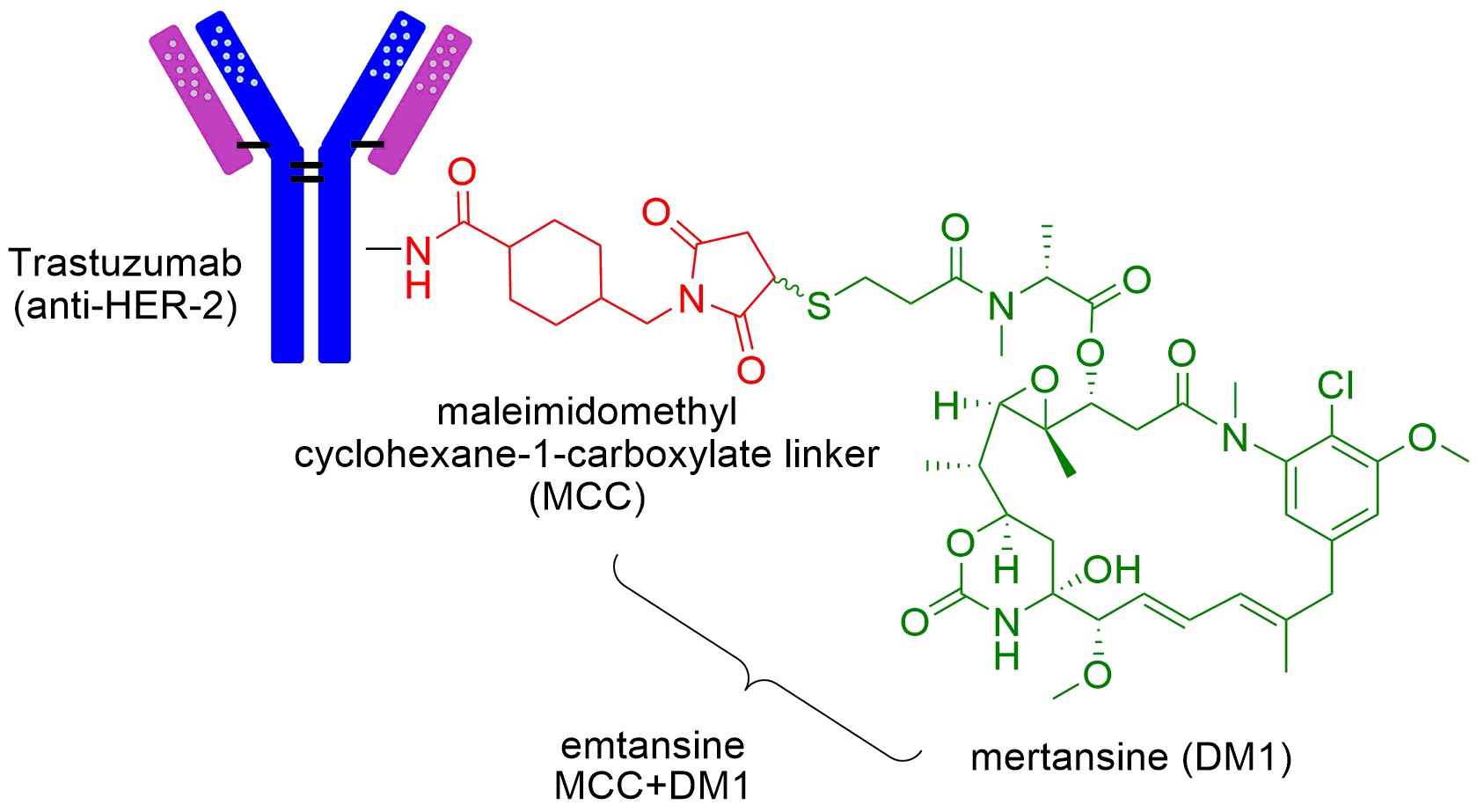Antibody-Drug Conjugates, the Combination of Large and Small Therapeutic Molecules
DOI:
https://doi.org/10.54779/chl20230319Keywords:
antibody-drug conjugates, cancerostatics, linker, bioconjugationAbstract
Antibody-drug conjugates are a promising therapeutic class of cytostatic agents. They consist of a monoclonal antibody, usually of the IgG type, to which one or more molecules of a cytotoxic drug are conjugated via a suitable linker (covalent chain). The conjugated form of the drug has significantly lower toxicity than the free form, which cannot be used alone in therapy. The Czech State Institute for Drug Control database has so far registered 9 antibody-drug conjugates for use in oncology. Given the vast number of possible combinations of antibody-drug pairs, a boom in sales is expected by 2025. In the blood circulation, the antibody-drug conjugate specifically targets the antigen expressed on the surface of the tumour cell. The linker between the antibody and the drug must be stable in the blood circulation environment and only be completely degraded in the target tumour cell after internalization of the conjugate or remain bound to the drug after degradation of the protein part of the conjugate (the so-called cleavable or non-cleavable linkers). Subsequently, the drug causes apoptosis of the tumour cell by various mechanisms. The drugs used in the 2nd generation antibody-drug conjugates were up to 1,000 times more toxic than the chemotherapeutic drug doxorubicin and were mainly auristatin and maytansine derivatives. Less toxic drugs based on camptothecins, amanitins, etc. are also being tested in the current 3rd generation of conjugates under development. The linker drug is attached to the antibody by various bioconjugation methods. Here, a range of synthetic chemistry techniques are applied, and bioconjugation can be either non-specific or specific. In particular, the peripheral amino acids of the antibody – cysteine, lysine, histidine, tyrosine, glutamine and reduced disulfide bridges between the two heavy chains or between the heavy and light chains – are conjugated. For a specific conjugation, e.g. glycoengineering techniques based on N‑glycosylation of antibody on asparagine (N297) have been developed. Conjugation techniques, as well as the synthesis of "naked" human antibodies are the subject of classified "know-how" of a number of commercial progressive companies and laboratories.
Full text English translation is available in the on-line version.





